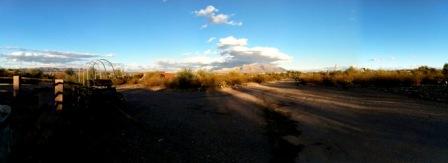by Marcela Davison Aviles
What do we imagine sustainable communities to be? “Sustainable” – perhaps more than any other adjective — describes the collective yearning for our civic culture in the new millennium. But what does “sustainable” mean for Latinos? When we close our eyes and dream of the good life, what do we see? Who do we hear? Who is there with us, standing by?

There is a song by the legendary Chucho Martinez Gil, whose lyrics describe a rhapsody containing the basic elements of our collective dreams – land, and caring for something other than oneself:
Han nacido en mi rancho dos arbolitos,
Dos arbolitos que paracen gemelos,
Y desde mi casita los veo solitos
Bajo el amparo santo y la luz del cielo.
Nunca están separados uno del otro
Porque así quiso Dios que los dos nacieran,
Y con sus mismas ramas se hacen caricias
Como si fueran novios que se quisieran.
Two little trees have been born
on my ranch
Two little trees that look like twins
And from my house I see them all alone
Under the holy protection and light
from the heavens.
They are never separated,
one form the other
Because that is how God wanted
for the two of them to be born,
And with their branches
they caress each other
As if they were sweethearts
who loved each other.
The dreams of el rancho – agrarian life – whether told in song, literature, or new media describe an idealized strategy for sustainability. Today they may also lead us back to our future; providing tools for living and navigating modern life. Sustainability according to pundits and city planners means going local – supporting local growers, working within walking distance of your job, strengthening the ability and capacity of individuals and neighborhoods to acquire healthy habits. To reduce our carbon footprint, energy costs and the cost of healthcare, we can recall and re-learn that which heritage provides – lessons on self-reliance and building community systems.
But what does all this mean for us today – how do we translate the magical realism of our troubadors, and the admonitions we hear daily to eat healthy, use less, think smart about our impact on the world? Our Latino heritage provides practical solutions, for long term and short term challenges.
Take housing – it’s expensive but necessary. Today, Modern Latinas can learn how to build a house using the tools of her ancestors – adobe and straw bale – and create a dwelling that not only reduces energy consumption but is aesthetically a treasure in its simple and sturdy beauty. This is not a utopian pipe dream – organizations such as the Canelo Project provide affordable lessons and networking with others in the green building movement, who are creating modern dwellings using these lessons of the past.
In the short term, we can use the lessons that are now ubiquitous in new media to cultivate gardens in our back yards, and cook using the methods of our grandmothers. With a click on YouTube, you can discover a million ways to make delicious meals inexpensively, in the time it takes to go to a fast food restaurant and back:
And we can take the time to connect to each other without plugging in to a social network – by leveraging the attributes we have always possessed – family, faith, our children, self-reliance and love of education. Combine these with music, storytelling, cultural activities – the action of coming together to achieve beauty – and the result is both profound and practical. Hearts connect when families make music together – even from the very start of life:
When families sing together and build an adobe barn, which shelters the family’s crop, then the adjective which is the stuff of dreams becomes the verb – an active state of being: we are sustained.
Marcela Davison Aviles is an author, lawyer and CEO of the Mexican Heritage Corporation and Executive Producer of VivaFest, a leading Latino cultural festival of Latino music, theatre, education, film, new media and the visual arts.
